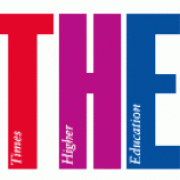You have /5 articles left.
Sign up for a free account or log in.
In lists of the next big higher education technology trends, Minecraft may not figure too highly.
But that could be about to change, with a series of projects at the University of Hull, in Britain, demonstrating the pedagogical potential of the world-building computer game.
 “Excavating” a medieval village and building public understanding of the work of a renowned Yorkshire architect are among the ways in which Minecraft has been used at the institution.
“Excavating” a medieval village and building public understanding of the work of a renowned Yorkshire architect are among the ways in which Minecraft has been used at the institution.
Joel Mills, Hull’s technology enhanced learning adviser, has also run a massive open online course about the use of the game in teaching, which attracted 3,000 participants.
He likened deploying Minecraft in higher education to feeding children “chocolate-covered broccoli,” suggesting that it was an accessible way of exploring challenging concepts with students.
“Putting people in an environment where it’s OK to fail, where it’s safe to get things wrong, and where it’s OK to rebuild and change is an enlightening process,” he said. “Through experiential learning, exploration and experimentation, we can really start to get underneath the barriers that could be there in some situations.”
Mills, who has been nominated for the Association for Learning Technology’s learning technologist of the year title, first used Minecraft at Hull for a public engagement project.
Members of the public were invited to download plans created by the 20th-century architect Francis Johnson and to have a go at constructing the buildings in Minecraft, with the best being placed in a “showcase” world.
One of the most ambitious uses of Minecraft at Hull has been the recreation of the site of the deserted medieval village of Wharram Percy.
This was undertaken to address the difficulties that some first-year history and archaeology undergraduates faced in converting theory into practice, particularly when trying to comprehend the scale of the site and residential plots on it.
Students were allocated a plot in Minecraft that they had to locate and excavate and, once they had identified what lay beneath -- be it a homestead, a farm or the manor house -- had to build a replica of it in the game.
Mills has also created a tool that allows sports physiology students to calculate how much energy certain tasks burn by “running” in Minecraft, rather than in real life, while the MOOC was fully integrated with Hull’s virtual learning environment, allowing assessments to be completed and feedback to be delivered in the game.
Hull is not the only British higher education institution that is making use of Minecraft: Lancaster University is building its Bailrigg campus in the game, in the hope that it could be used for virtual tours by foreign students.
Mills said that Minecraft could not be used to teach every topic, but that any good lecturer would look to utilize whatever makes their students tick.
“The secondary school sector has woken up and seen the potential that Minecraft has, and I think the higher education sector is just starting to wake from its sleep about what can happen,” Mills said. “There are so many universities picking it up and trying it out, and I think we will see more innovative projects in higher education that use Minecraft as a tool.
“It has a very shallow learning curve so it’s easy to program for, and it has endless possibilities.”




